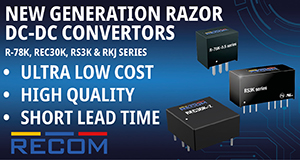Infineon Technologies AG is launching its first magnetic sensors based on TMR technology. This makes the company the world’s first sensor manufacturer to offer magnetic sensors based on all four magnetic technologies: HALL, GMR, AMR and TMR. Infineon will present the new XENSIV TLE5501 angle sensor family at the Sensor+Test 2018 fair in Nuremberg (26-28 June). In terms of functional safety, this is a milestone: Infineon is also the first supplier in the market to achieve the highest automotive functional safety grade ASIL D for angle sensors with only one single sensor chip.
The new products are fast analogue TMR-based angle sensors dedicated to automotive applications. Their fields of use range from steering angle applications with the highest functional safety requirements to motors for wipers, pumps and actuators and electric motors in general. They are also ready to be used in industrial and consumer applications like robotics or gimbal.
The TMR technology offers a high sensing sensitivity that comes with a high output voltage realizing output signals of up to 0.37 V/V for all XENSIV TLE5501 products. Unlike other technologies, a TMR-based sensor can be connected directly to the microcontroller without any further amplification, thus saving costs for the customer. Furthermore, TMR shows a very low temperature drift reducing external calibration and compensation efforts. In addition, TMR technology is well known for its low current consumption, which is as low as 2 mA for the XENSIV TLE5501 family.
The new sensor family will be available at two different qualification levels. The TLE5501 E0001 is qualified according to AEC Q100. This version is pin-compatible to the established Infineon TLE5009 but can enable cheaper systems as no additional amplifier is necessary. The other version, the TLE5501 E0002, offers ISO26262-compliant development, achieving ASIL D level with just one single chip. It incorporates decoupled bridges for redundant external angle calculation and offers highest diagnostic coverage as demanded by functional safety regulations.






